Combi walls are temporary retaining solutions that are quick to install, boast reusable materials, and are therefore an economical choice. Design institutes and project owners are increasingly choosing this method over diaphragm walls. In the Shanghai – Zhejiang - Jiangsu triangle there are already many examples of this construction method. Combi walls consist of interlocked casing and sheet piles that form a water tight retaining wall. Combi walls have been built for decades in Europe, especially for harbor walls.
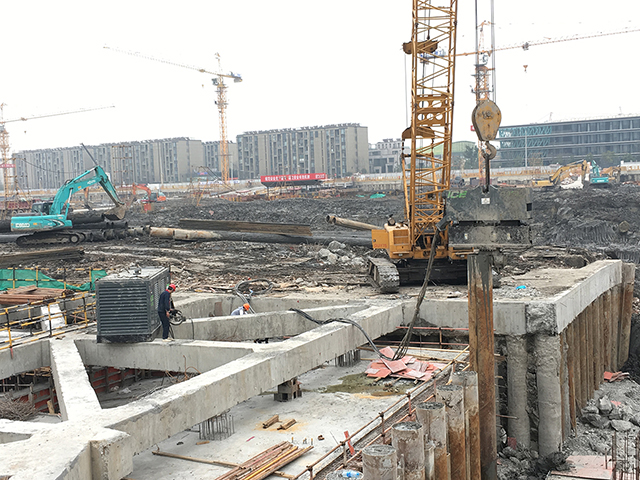
Alibaba’s West Creek Park covers a building area of 427.160m2. The building has 7 floors above ground and 2 basement levels. The main contractor is Shanghai Construction Group. The site has many different foundation piles, 4164 cast-in-situ bored foundation piles, 1594 retaining piles, 356 column piles, and 10588 tri-axial deep hole mixing piles. The contract completion period is 165 days.

A large part of the sites retaining walls was built by SMW-method. Due to the large size of the excavation pit, the area was subdivided in smaller cofferdam retaining areas. These smaller sized areas used combi wall solutions.

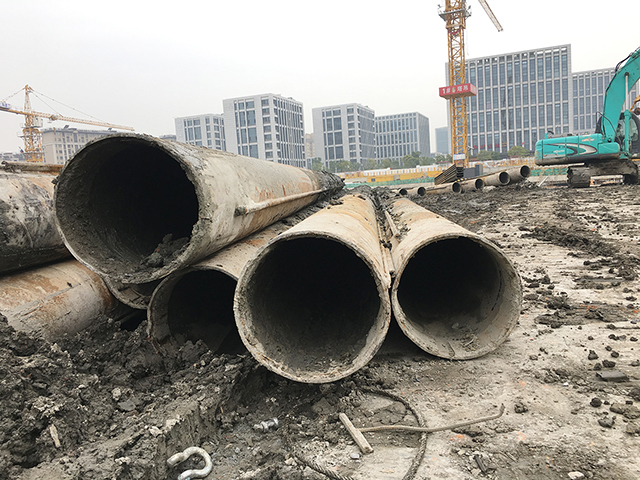
The geology of the construction site is relatively complex. The top 14 meters are mainly backfilled with silt and sand, at 14-18 meter the soil layer is silty clay. In September 2017, the piles were installed with excavator mounted pile drivers (711mm and 630mm diameter, 16-18m long interlock steel pipe piles and 9m long Larsen piles). The silty clay layer could not be fully penetrated; Hangzhou Fushide Geotechnical Technology used high-pressure water jetting to overcome soil resistance and finally drove the piles to depth. After 4 months the excavation work was completed, and the retaining wall piles needed to be extracted. The excavation work had altered the working conditions, excavators could not drive up to the retaining wall anymore to extract the piles. The client needed a crane hoisted hammer with a sufficiently high frequency, but a not too high amplitude to keep the 711mm piles from tearing. If piles break, the removal of the retaining wall will not be complete and there is a risk of vertical settlement. Remediating these problems with high pressure jet grouting is uneconomical and time intensive. A free hanging ICE 416L vibratory hammer hoisted by a 75t crane was called in to do the job. This vibro extracted most of the piles without water jetting. For a few piles in very compacted soil layers that the 416L could not efficiently extract, the client enlisted the 815C vibratory hammer.
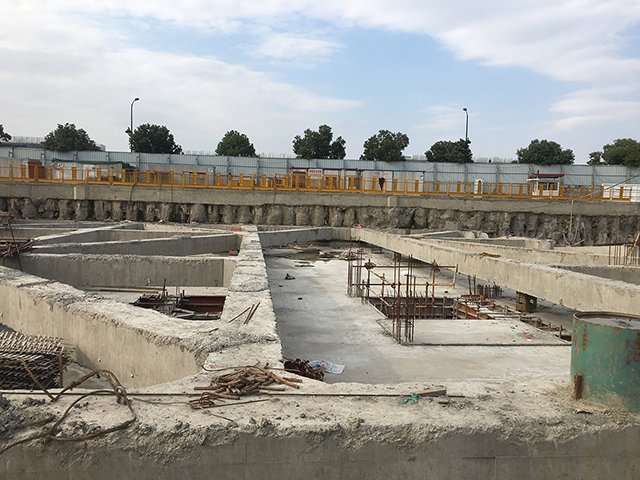
ICE recommended the 416Lvibratory hammer for this project. The hammer weighs a mere 5,5t, is compact, and when used with a relatively small crane has a large working radius. The hammers throat width is narrower than the width of No.3 or No.4 Larsen piles, allowing for great maneuverability on site.
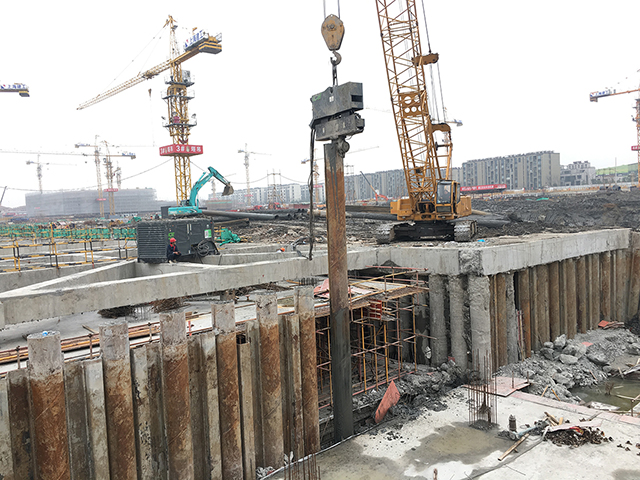
Fushi Geotechnical initially rented one-unit 416L. The result was so satisfactory that they quickly rented more units to get the same efficiency on other running projects.

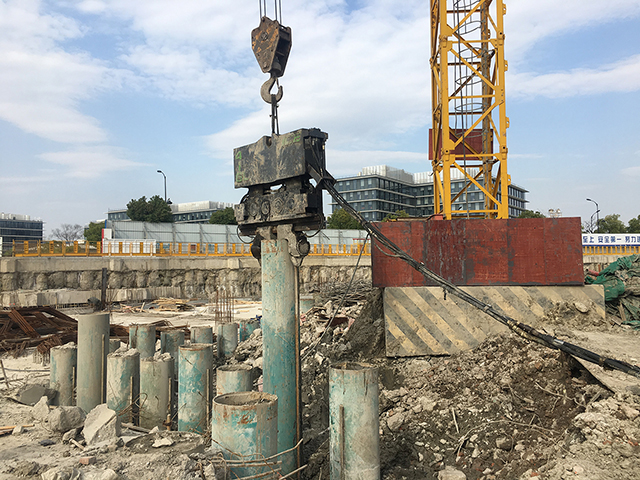
When you look at the eccentric force of the 416L you would think it is close in performance to excavator mounted hammers, the difference in performance is explained by the much more powerful, dedicated, ICE 400 power pack that powers the 416L. All of this power packs 400L hydraulic flow goes to operating the hammer. The excavator’s hydraulics need to power the movement of the piling machine while driving, often resulting in suboptimal use or large variations in power to the hammer.
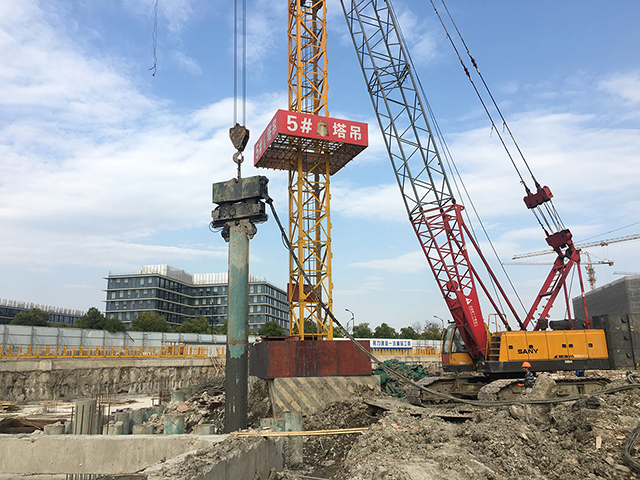
The ease of pile extraction is determined by the installation method, the time the piles have been in the ground, and the degree of deformation of the piles. Based on this information ICE can recommend a suitable vibratory hammer. The hammers available from ICE all have high rotation speed that easily liquify the soil. The ICE clamp design combines large clamping surface area with high clamping force, avoiding tearing of steel.
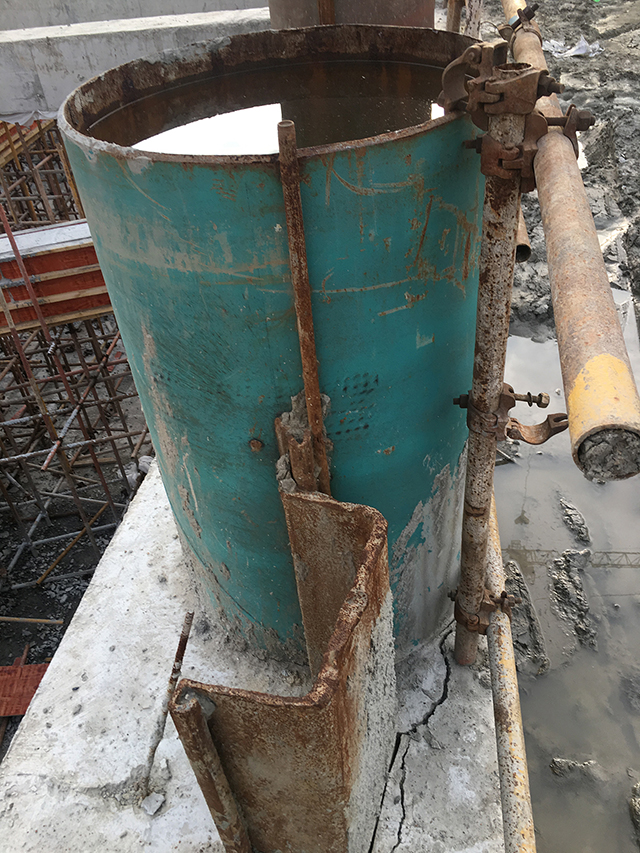
If you face difficulty extracting the pile, try one of the following strategies:
· Ensure the vibrator clamps the pile in the center of the pile, any deviation from the center will reduce the amplitude available to the pile
· Inject water around the pile to loosen up the soil
· Drill a pilot hole next to the pile to reduce the soil friction around the pile
· Vibrate the pile down first to wake it up, this can take up to 5 minutes
· Hit the pile with an ICE impact hammer to overcome soil friction, then quickly move in with the ICE vibro to pull out the pile before soil friction sets in again
· If the extraction is very slow, cut the pile once you have a fair amount out of the ground. This will reduce the weight of the pile and give more amplitude to the pile.
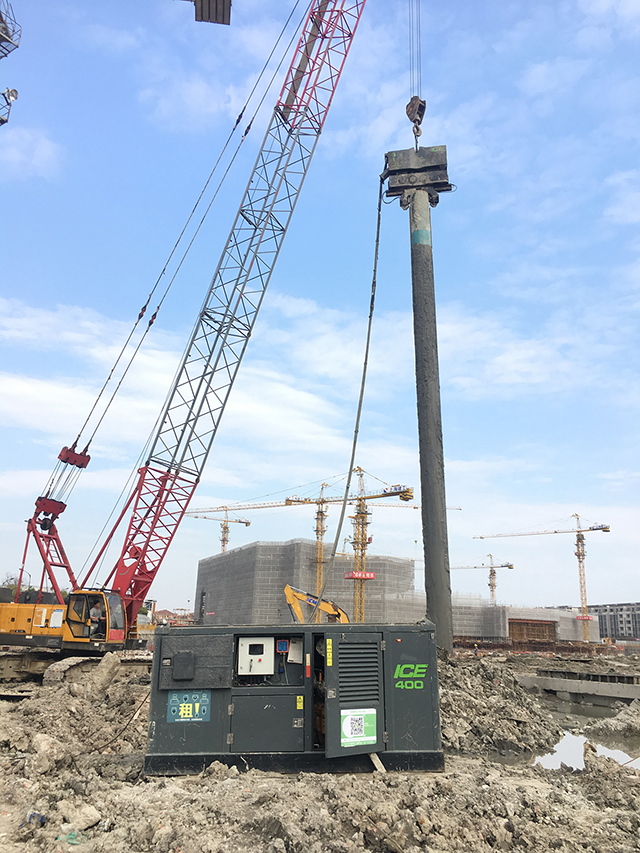
Get in touch with an expert today! We are here to help you get your job done.
